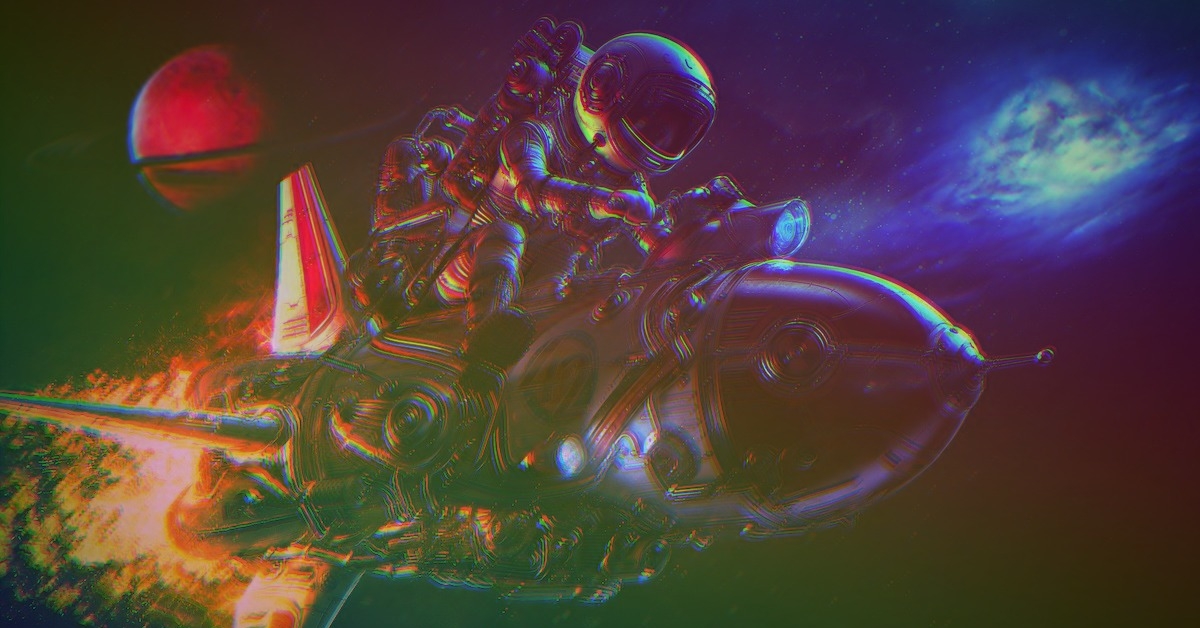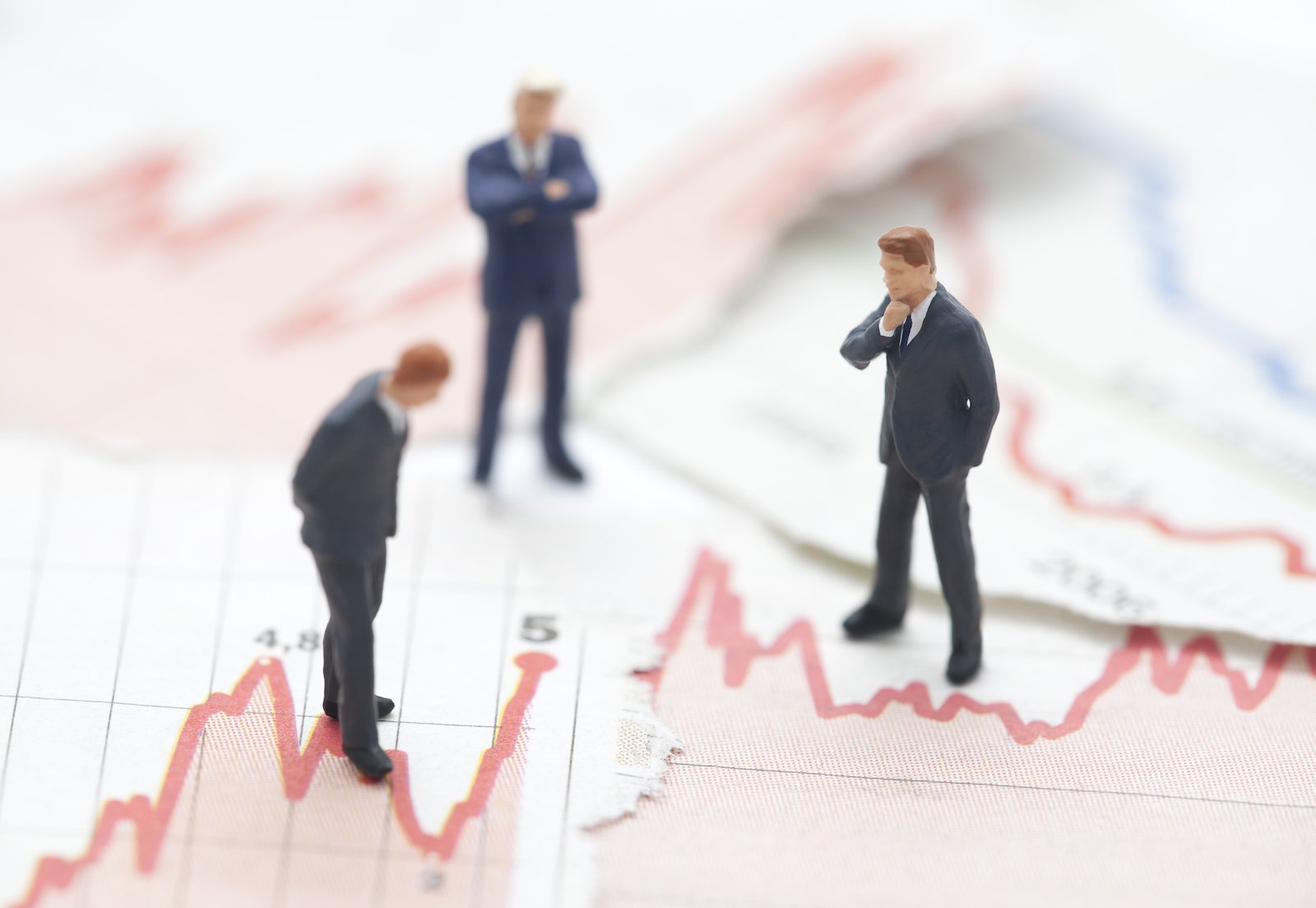AI Crypto Trading Bots Are the New ‘Edge’ – For Now
There’s a word that every trader knows: “Edge.” You need an edge to trade successfully. And edge can come in many forms. Maybe you understand something the market doesn’t; maybe your analysis is sharper than the conventional wisdom; or maybe you’re so good at reading the price charts — recognizing the patterns — that you can sniff out the precise moments to buy and sell.
Edge is hard to find. Most people don’t have it. Studies suggest that more than 80% of day-traders lose money.
So what will happen to traders’ edge when the crypto markets get flooded by AI? “AI is going to be the enemy of the stubborn-minded,” Sheraz Ahmed, Managing Partner at Storm (a blockchain consultancy), told me recently, when I asked him for the biggest impacts of AI for crypto. “If a trader does not want to use [AI] and wants to do everything manually, they’re going to get left behind.”
This is not a trivial concern. Whether we like it or not, by far and away the most widespread use of cryptocurrency — still — is simply the buying and selling of cryptocurrency, often in the form of short-term scalping.
The AI trading revolution might have already begun. As CoinDesk’s Ian Allison recently reported, investment data analytics firm Chain of Demand, which works with blue chip institutions like Bloomberg, has built a tool that leverages ChatGPT to analyze bitcoin price fluctuations. OkX, a crypto exchange, recently published a guide for the “9 best crypto trading bots to use in 2023,” which includes “Dollar Cost Averaging bots, Options bots and HODL bots.” And crypto Twitter oozes with sketchy-looking ads for AI trading bots, such as “This Crypto Ai Trading Bot makes $100 A Day!”
The appeal of AI trading, to many, is that you can put it to work and then go about your life. “A lot of us have a problem with knowing when to sell,” says Daisy, a crypto education influencer who goes by the alias Crypto Empress. Daisy now works with two AI trading projects, Otto Bought (get it?) and the DeFi Trading Club, that do things like hunt for entry and exit points, assist in technical analysis, and help with macro studies like evaluating a crypto start-up’s tokenomics structure.
“This is going to change how people take profits,” says Daisy. “Now people don’t have to be stuck at computers. AI bots are going to do it for you. All you have to do is cash out your money and do real-life things.” Other AI trading projects, such as Verox, are using the tech to evaluate social media activity (to gauge market sentiment), understand fluctuations in volume and optimize passive staking income.
Other traders are more skeptical. “Realistically, we’re not there yet,” says Christopher Inks, founder of the trading group TexasWest Capital. He knows the large trading desks and banks are touting that they use AI, but says “we don’t have much information on how much of an impact AI is having on their trading, and how much they’re investing, and how much they’ve allocated.”
As for the AI trading bots? Inks considers these to be the successors to algorithmic trading bots, which have long been catnip for rookie traders seeking easy wins. “Everybody and their grandmother swears that their bot has a 90% win-rate strategy,” says Inks. “They don’t.”
Then again, even if the AI bots of today are not a silver bullet, it’s easy to imagine a world where they will be impossible to beat. I happen to have some first-hand experience here. For much of the past two years, I tried my hand day-trading U.S. stocks (not crypto). The idea is that you develop a set of rules — a playbook — and then you rigorously follow those rules, so you avoid trading with emotion.
Many day-traders embrace that philosophy. “Our edge comes from being robotic,” says trader Adrian Zdunczyk, founder of the trading group The Birb Nest. “Our edge comes from following the reliable steps that have predictive value.”

So that’s what I did. I tried to stick to my trading plan, only pulling the trigger on trades that met the exact criteria of A, B, C, and D. Example: The price of the stock jumps at the open (9:30am EST), then regresses back towards the VWAP (Volume Weighted Average Price); the direction of that movement is aligned with the daily trend; there’s decent volume on the one-minute candles; and on and on and on.
My takeaway? It’s hard. It’s very hard.
I tried to be robotic in my adherence to the rules, but the problem is that I never had rock-solid confidence that my baseline rules — if followed to the letter — would reliably cough up profits. When a trade works, it’s tough to know if you correctly followed your playbook or if you just got lucky. If a trade fails, maybe you perfectly followed your system but the market happened to move against you — an acceptable loss. Even the best of traders lose all the time. Zdunczyk, at Birb Nest, says that he’s wrong in 70% of his trades, but the 30% winners are so profitable that on balance he comes out ahead.
The point is that whereas traditional bots could only be programmed (more or less) to follow specific sets of instructions like the ones I used — buy if Condition A, Condition B, Condition C, and Condition D are all true — the new breed of AI will likely bring something else: Pattern recognition.
Here’s a quick analogy. Remember the infamous “China spy balloon” that hovered over Alaska? Its trajectory was found with AI. Synthetaic, a startup, used AI to quickly process an ocean of satellite imagery. It would have taken a human forever to pore through all the photos; the AI could do it in a blink. Similarly, a human trader needs to click through hundreds or thousands of cryptocurrencies to find the exact chart configuration that matches their tradebook. Once the AIs get better at pattern recognition, they’ll do this in a heartbeat.
Some traders, for example, swear by using chart patterns such as “head and shoulders,” which looks like a small hill on the left, then a big hill in the middle, then another small hill on the right. The theory is that this is bearish and a potential signal to sell. (You’d also look at many other factors, of course.) The AI bot could scour every single cryptocurrency — and every trading pair, not just BTC/USD but more exotic ones like SOL/BTC — at every second around the clock, hunting for those coveted Head & Shoulders patterns, and then only selling if it met a string of set conditions.
“AI helps you spot these more complex patterns that are present in nature,” says Zdunczyk. “It gives you more accuracy.” Or perhaps the AI will eventually laugh at our use of the Head and Shoulder patterns, and instead identify its own system for finding an edge. That’s what happened in chess, where AI eventually developed winning strategies that had never been used by humans.
Maybe crypto AI tools like Otto Bought and Verox are already capable of gobbling up inefficiencies in the market, or maybe they’re not. I’d argue it’s a moot point. Eventually they will be, and it’s only a matter of time. “The amount of AI is going to increase,” says Zdunczyk, who has been experimenting with ChatGPT to write scripts for trading bots.
But he takes a wider lens and sees this as part of a decades-long trend. After all, traders once needed to be physically present on the trading floor to bark out buy and sell orders. Then came a shift to digital, then the rise of high-frequency trading, then no-fee apps like Robin Hood. The space is always evolving.
At some point, you will likely need to be using AI or else you’ll be stuck with bow and arrows while the other armies fire machine guns. “The advantage will arbitrage itself away,” predicts Zdunczyk.
And once everyone is using AI?
Perhaps the only winners will be those who develop the beefiest, fastest, smartest AI systems. Or maybe if you’re using it and every other trader is using it, it’s hard to see where you — or anyone — will find an edge.
Edited by Ben Schiller.









